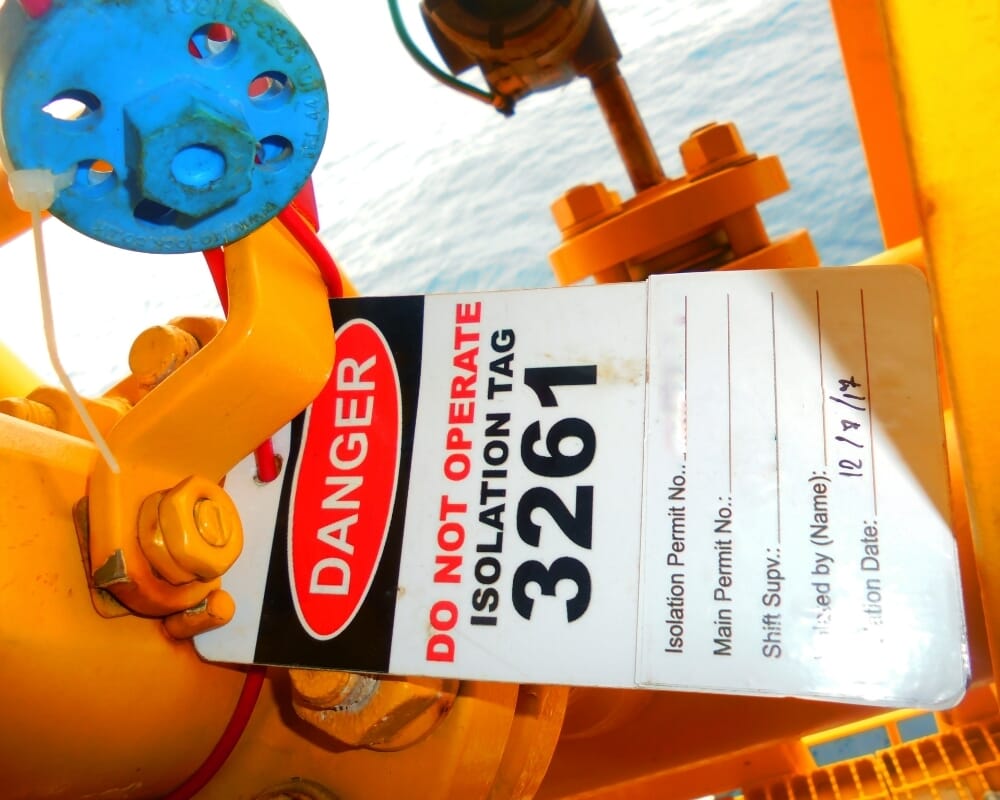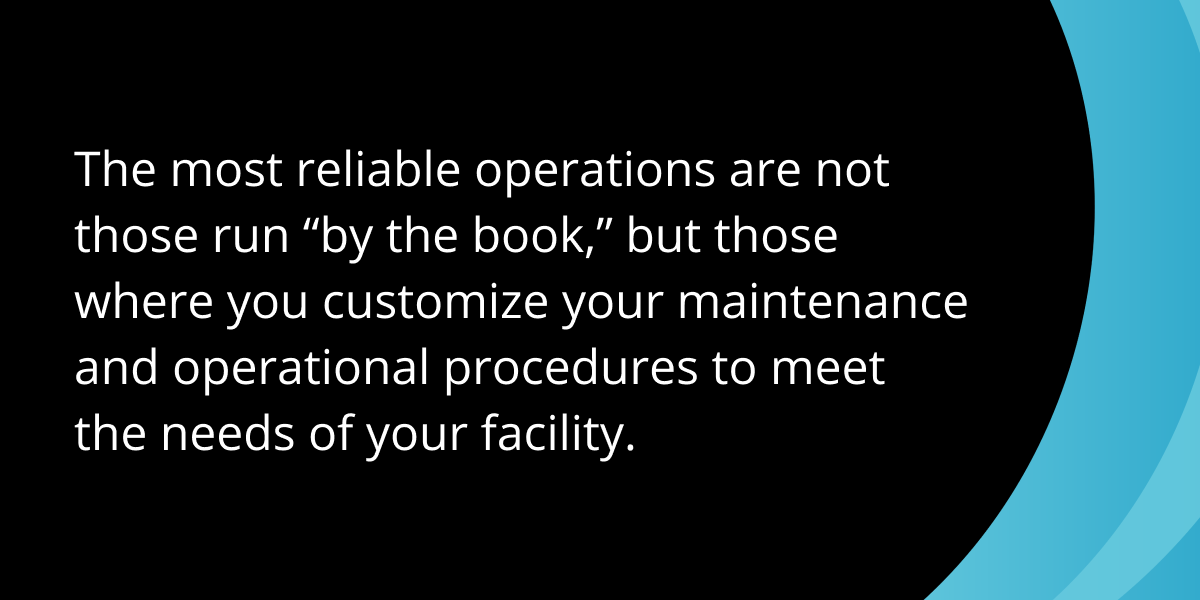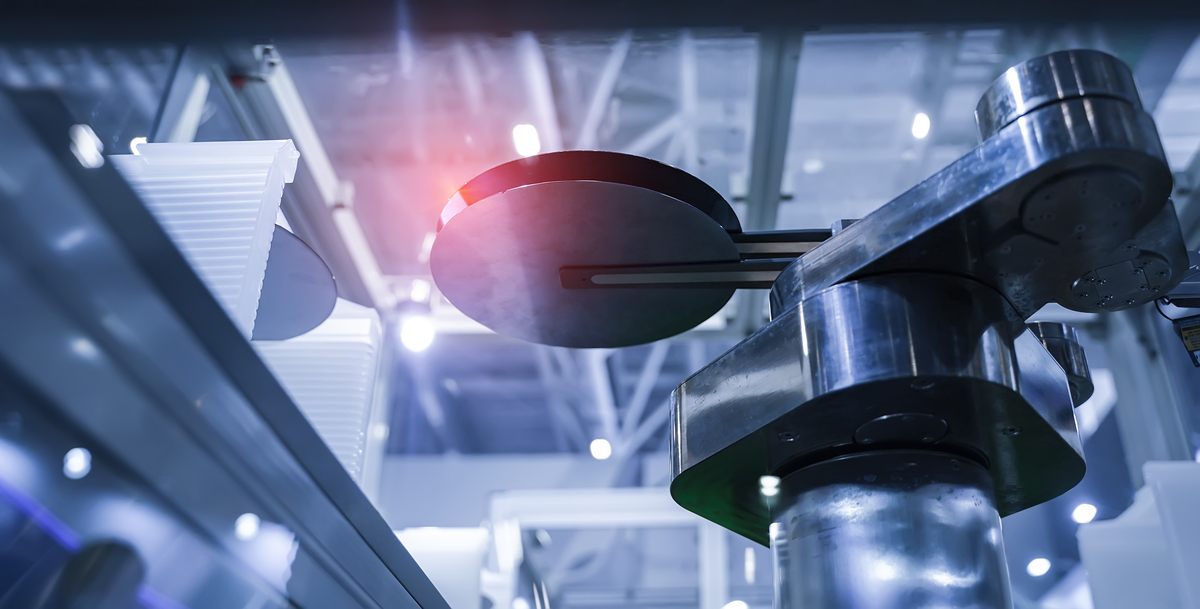
How to Lockout/Tagout Air Compressors
October 8, 2025
What You Need to Know about Air Compressor BMS Integration
October 22, 2025Six Air Compressor Reliability Tips That Boost Uptime and Equipment Life
Kaishan USA | October 15, 2025 | Uncategorized

With downtime in the automotive industry costing $2.3 million per hour—a staggering $600 per second, according to Siemens—air compressor reliability translates into a big-ticket item.
Even more critical than energy use or cost, achieving air compressor reliability is one of the most important issues facility managers face.
If you can’t count on your compressed air system to provide the power you need, it really doesn’t matter if you’re saving energy or money. You’re not delivering the power your operation needs to succeed.
It’s a critical factor in almost every industry. Ensuring pneumatic controls have a steady, consistent power source. Supporting the speed that makes pick-and-place equipment cost-effective. Driving material handling equipment smoothly and evenly. Enabling the precision that computer numerical control machines require.
Delivering air compressor reliability, of course, requires that you master many basic principles this blog series has already covered, including:
- Choosing the right air compressor
- How to size air compressor
- Installing an air compressor correctly
- Increasing rotary screw compressor life
- Using the right oil
- Oil sampling best practices
- Managing pressure (avoiding air compressor short cycling, unload hours, header pressure, pressure band)
- Heat removal/ventilation
- Storage
- Controls (especially VSDs)
However, we’d like to focus on six air compressor reliability tips that will increase rotary screw compressor life and ensure uptime, not only for your compressor, but also for the end-use equipment that relies on it.

If the compressed air system isn’t reliable in a food processing plant, production can stop, resulting in lost products and extensive cleanup.
We’ll start with developing a maintenance plan.
1. Develop a Compressed Air System Maintenance Plan
While all manufacturers develop extensive user manuals and documentation, even these materials have their limitations.
Here’s why: we create these materials assuming you will operate your rotary screw compressor in what we consider the best possible circumstances: running it 24 hours a day, seven days a week, and shutting it down for service every 2,000 hours. If that’s what you’re doing, by all means, follow the book.
Unfortunately, very few of our customers find themselves with those perfect conditions. Maybe you’re only running two shifts, and your compressor is idle overnight. Maybe your environment is dusty or demanding in some ways. And there could be any number of additional ways in which your situation is not perfect. So, the maintenance plan in the book won’t work for you.
The point is that, if your application does not conform to those ideal conditions, you need a compressed air system maintenance plan that is specific to your machine and your facility. You will need to adapt. To change what you are doing to match the conditions in your facility better.
The most reliable operations are not those run “by the book,” but those where you customize your maintenance and operational procedures to meet the needs of your facility.

For more specific suggestions, we’ve compiled ten rotary screw air compressor maintenance tips, and we have also created a comprehensive air compressor maintenance guide.
Next, you’ll want to develop a checklist of items you should monitor regularly.
2. Follow a Daily Checklist
If you want your compressor to operate reliably, you’ll need to give it some attention. What’s it doing? How well is it meeting your needs?
As a guide, we compiled a few “vital statistics” you should review regularly, if not every day:

Compressed air helps move tools accurately during CNC machining, so reliable operation is crucial.
Load Cycles
Your goal is to reduce load cycles, after the machine has established the needed pressure and unloads. Then, of course, when the pressure drops, the compressor loads again.
The idea is to keep these load/unload cycles to a minimum. There’s no target to reach, other than zero. It would be ideal if you could turn on your compressor and run it without unloading until you reach your 2,000-hour service interval. That also helps avoid air compressor short cycling.
Learn more about “How Often Should an Air Compressor Cycle?”
Motor Starts
For all the same reasons, you want to reduce the number of times your compressor’s motor starts running. Different manufacturers publish their recommendations, based on actual data, but the main objective is to reduce the number of times your motor kicks on. That reduces wear and tear on the motor and prolongs equipment life.
Condensation
Air compressors create water as a byproduct of the compression process. But water is a killer of compressors, so you will want to make sure you’re eliminating it. Make sure drains are clean and sumps are working.

Semiconductor fabrication requires precise handling, which, in turn, can only come from a compressed air system operating with rock-solid reliability.
Temperature
Heat is another natural byproduct of the compression cycle, and you’ll want to make sure your compressor is getting rid of some of it.
But you don’t want your temperature to go too low. That will result in condensation and put more water into your system (that you will have to remove).
The goal is to keep your compressor in its sweet spot, where it’s not too hot and not too cold. Just right. Like Goldilocks.
To learn more, read our blog post, “All the Ways Heat Gets into Your Compressed Air System (And How To Get Rid of It).”
Vibration
Although there’s no universal rule about what causes it, vibration can be a key indicator of your compressor’s overall health and performance in your facility, especially in centrifugal compressors. It may be simply an adjustment to changes in ambient temperatures or humidity. Or it could be an early indication of more serious issues, such as bearing failure or alignment issues. So, it’s wise to pay attention to it.
For more details, read our blog post, “Diagnosing Air Compressor Vibration Issues: Tips for Technicians.”
Monitoring your compressor on a regular basis could well give you advance warning about changes that it is undergoing. You’ll want to pay close attention to any trends that become apparent.
3. Watch for Trends
Your compressor should run consistently, for the most part, only changing when its environment changes.
If you notice a sudden, unexplained change in power consumption or temperature, for instance, you need to investigate.
Think beyond the published tolerances. They are just a guideline. The goal is to identify trends. If you track key indicators daily or monthly and review them consistently, you can detect a trend in a specific data point.
If a reading is heading in the wrong direction, it may be your opportunity to anticipate problems. And deal with them before something goes wrong.
Operating your compressor reliably requires that you recognize when demand has changed.
4. Adapt to New Conditions
If there’s one thing we know in today’s industrial economy, it’s that things change. Maybe your ambient temperature goes from 80°F to 102°F. Perhaps you go from three shifts to two or vice versa.
Whatever those changes are, they probably will impact your air compressor and your compressed air system.
Adding more production lines that use compressed air, for instance, could mean you don’t have enough capacity. While taking tools away could mean you have too much.
And you need to adapt sooner, rather than later. That’s all part of taking ownership of your compressed air system.

Highly automated pick-and-place equipment driven by a reliable source of compressed air is essential in the highly competitive electronics industry.
5. Take Ownership
A lot of responsibility comes with the purchase of an industrial air compressor. To operate it efficiently and safely, you need a certain level of knowledge. The good news is that much of that information is now available to you through the internet or with resources like this blog.
We encourage our customers to explore that information and learn more about compressed air. That’s one reason we have devoted so much effort to these blogs.
We sometimes hear “experts” tell users not to touch their air compressor and compressed air system after they have adjusted it.
That’s not our approach. After all, your compressed air consultant isn’t there on third shift when problems occur. And you’re the only one who knows what’s happening, whether the system is meeting your needs. Or not.
We want you to touch your compressor. To interact with it. To take ownership of it.
We hope you’ll track its operation around the clock and have data to show your compressed air pro when they come to help. Not everyone needs (or can afford) a complex data monitoring device. Sometimes, a piece of paper and a clipboard will do just fine.
That level of ownership is the best way to build reliability into your system. But you still need a compressed air professional to help you with the challenges that inevitably arise.
6. Choose a Good Business Partner
In many ways, choosing a good business partner is the most critical air compressor reliability tip because having the right consultant in place could well address the majority of the issues we’ve listed above.
They can help you develop a maintenance plan, create a daily checklist, identify changes, adapt to new conditions and take ownership of your compressor and compressed air system.
In our white paper, “The Top 25 Reasons an Independent Air Compressor Distributor Enhances Compressed Air Performance,” we go into even more detail on how the right compressed air consultant can save time and money and reduce downtime.
As a manufacturer, we recognize that we cannot be out in the field with every customer, all the time. That’s why we partner with a nationwide network of independent distributors. They are in your local community or region, and they take very seriously the job of providing advanced compressed air expertise and service.
They can provide on-site help and consultation as needed and have factory-trained air compression experts who can service your air compressor system without a problem.
We partner with these independent, local businesses because it's the best way to serve you. Unlike large corporate suppliers, there's no red tape. Our distributors offer expert guidance, faster response times and personalized support tailored to your needs. They don't just sell compressors—they build relationships, ensuring you get the right system, reliable service and quick access to parts when you need them most.
With factory-trained technicians and a deep understanding of industrial applications, they help maximize efficiency and minimize downtime. So, when you buy through Kaishan, you're getting more than a product—you're getting a local partner who cares about your business and wants to help you succeed.
Key Takeaways
Six air compressor reliability tips include:
1. Develop a maintenance plan.
2. Follow a daily checklist.
3. Look for changes.
4. Adapt to new conditions.
5. Take ownership.
6. Choose a good business partner.
Let Us Help
Ensuring the reliability of your rotary screw air compressor is critical to the operation of your compressed air system and all the processes that rely on that system. If you need help finding ways to increase reliability and cut downtime, get in touch with the experts at Kaishan. Contact us today.
Listen to the Podcast Version
Custom Maintenance and Daily Monitoring
Alright, welcome back, everybody, to The Big Dog Podcast! I’m Jason Reed—joined as always by the best in the business, Lisa Saunders. And today, we’re digging into what keeps your rotary screw compressor humming: reliability. More specifically—how do you actually increase it, day in and day out? Because, let’s be honest, those factory maintenance manuals—they’re, uh, kind of written for a perfect world, right? Who’s running a plant with 24/7 pristine conditions out there? Not the folks I talk to.Exactly. I mean, there’s always something different at every facility—maybe you’ve got dust, you’ve got temperature swings, or you’re only running two shifts. Relying strictly “by the book” for your maintenance? That’s a recipe for headaches. Customization is huge. You gotta look at how your compressor is actually being used and shape your plan around real conditions, not some textbook scenario. And, that’s why the most reliable operations? They aren’t the ones stuck on autopilot—they adapt.
Yeah, and that starts with your daily routine. I tell people, make a checklist. Take five minutes every day—seriously, that’s it—to check the “vital stats.” Let’s rattle those off: load cycles, motor starts, condensation, temperature, and vibration. Why? Because each one gives you a clue about your system’s health. Too many load cycles? Might be short cycling—that’s just chewing up your compressor for no reason. Loads of condensation? Maybe your drains aren’t doing their job. That kind of thing.
I—I love checklists, honestly. And let me share this story: I was at this Midwest food processing plant, right? They’d been seeing, like, these little unplanned shutdowns...nothing dramatic. But it stacked up. So, with their reliability lead, we put together a basic, customized checklist tailored to what their machines actually experienced—things like checking drain valves for blockages, looking out for condensation in the lines, and monitoring temp swings. And, you know what? Within a year, their unplanned downtime dropped by 30%. Just from literally tracking and tweaking day-to-day checks. Kind of wild for something so simple.
Yeah, that’s huge. And I know folks out there sometimes roll their eyes at “just another checklist.” But if you’re only waiting for the alarm to go off, you’re waiting way too long. Custom, daily monitoring—nobody else is doing it for you. Those little numbers you’re jotting down—those become your early warning system, every single time.
Trend Spotting and Adapting to Change
So, let’s talk about what happens once you start tracking those stats. It’s not just about writing numbers in a notebook—the real key is spotting the trends before they turn into big problems. Your compressor should be running pretty steady, unless something in its environment changes. When you see outliers—maybe, suddenly your power use creeps up, or you get a weird spike in discharge temperature? That’s your clue right there.Right—I mean, think about this: A massive automotive assembly line, right? If they miss a bad trend—a slow temperature climb, an unusual vibration—they’re not just dealing with a little delay. Downtime costs about $2.3 million per hour in those places. That’s, uh, six hundred bucks a second. I remember working with a team who noticed a consistent, small increase in their compressor discharge temp. If they’d ignored it, that whole line could have gone down—instead, they found a failing cooling fan before it got catastrophic. That one little temperature trend saved their whole operation. Sometimes it really is the difference between a minor repair and a full-stop crisis.
And it’s not just temp—could be, suddenly, your motor’s pulling more amps. Or vibration readings aren’t what you expect. Comparing your current readings with last month’s? That’s often more helpful than checking against some “acceptable limit” in the manual. You see where things are headed. If something’s drifting, you adapt. Maybe you add more ventilation, or tweak your maintenance schedule. Or—hey, sometimes conditions change in your plant: new lines come online, ambient temps spike, even just changing a single shift can throw your routine off.
Exactly. Your system isn’t set-it-and-forget-it. You gotta be ready to change it up when your operation changes. If demand goes up—like a new production line, or suddenly everything’s running hot because it’s August instead of March—you’d better be watching those trends. Track your stats, notice what’s normal, and jump on anything unusual. It’s boring, until suddenly it’s not. That kind of adaptability is what keeps you from scrambling after the fact.
Taking Ownership and Choosing a Partner
And that brings us to, well—ownership. It’s easy to hand things over to outside techs and just call for help when something breaks. But, if you want true reliability, operators—meaning you folks actually on site—need to be invested. You’re there every shift, you hear the noises, you see the little changes. Don’t let a consultant tell you not to touch anything. That’s outdated thinking. You know your system best, day in and day out.Yeah, no one’s gonna be on third shift but you. Your local air compressor guy isn’t camping out in your plant, and when things go sideways at 2 a.m., it’s on you to notice changes, log what’s off, maybe even make some safe adjustments. Obviously, you want backup—don’t get me wrong. But you can’t outsource ownership. Paper and clipboard’s good enough for a lot of tracking, by the way. You don’t need some fancy remote dashboard unless you really want it.
And, this is where good partners make all the difference. I remember working with a packaging facility—maybe three years ago? They were prepping for a push—way higher volume, more shifts, whole new line of products. What actually made it work wasn’t just installing a bigger compressor or pushing more air. It was working side-by-side with their local distributor, who understood the quirks of the building, helped tweak settings, sourced the right parts fast—basically, a responsive partner who could show up, instead of going through corporate runaround. That partnership was key for tuning their system to new demands—no extended downtime, no panic overnight deliveries.
Absolutely. Big difference between a hotline that puts you on hold and, you know, a tech who’s been in your facility and already knows your equipment history. They help you refine maintenance plans, adapt to changes, and yeah—supply the right parts when things go sideways. Not just selling you equipment, but really caring about your operation’s uptime.
That’s what it’s all about. Taking ownership, partnering with the right people, and being proactive—that’s how you keep that compressor reliable year-round, not just when everything’s easy. If you’re listening and you want to dig deeper into any of these topics—custom checklists, trend tracking, how to build a real partnership—let us know. We could talk all day, but we should probably wrap this one up.
Yeah, let’s do it. Thanks for joining us on The Big Dog Podcast. Next time, we’ll be back with more straight talk and smarter air. Appreciate the conversation, Lisa.
Thanks, Jason. And thanks to everyone listening—take care, keep your air reliable, and we’ll catch you next episode!
Random stat or
customer quote
textXXtext
text

